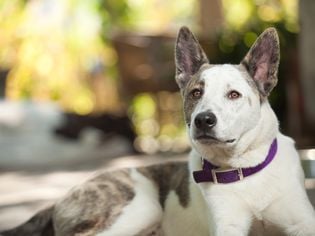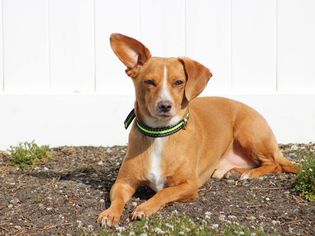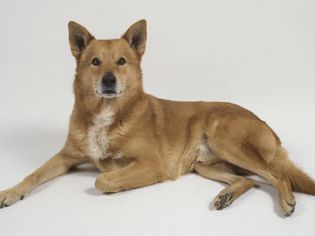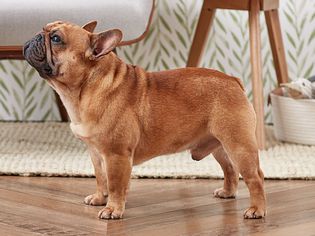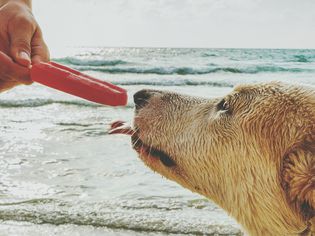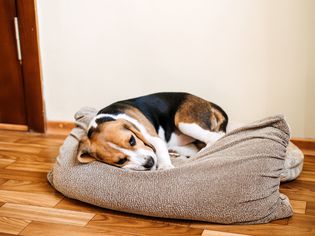The Brussels griffon is a Belgian dog in the toy group with a short face, round head, distinct facial fur, large eyes, and a silky coat. These compact and sturdy dogs date back to the 1800s. This breed's human-like expressions are reflective of its personality, which is known for including mischievous and playful antics.
The breed is also known as the griffon bruxellois, and it may simply be called "griff." Lively and alert, the Brussels griffon is a pleasure to know. These dogs have a reputation for being natural entertainers and are joyful and loyal companions to their owners.
Breed Overview
Group: Toy
Height: 7 to 10 inches
Weight: 8 to 12 pounds
Coat: Smooth or rough
Coat Color: Red, black and tan, solid black, or belge (mix of black and reddish-brown)
Life Span: 12 to 15 years
Temperament: Active, playful, loyal, sensitive, intelligent, stubborn
Hypoallergenic: Yes (rough-coated); No (smooth-coated)
Origin: Belgium
Click Play to Learn More About the Scene Stealing Brussels Griffon
Characteristics of the Brussels Griffon
The Brussels griffon's personality is unique, being both curious and sensitive to its surroundings. While they have an especially friendly temperament with their owners, these dogs are also independent thinkers that tend to follow their own desires when it comes to training. Griffs are not recommended for households with young children, however, they love to play with their adult families.
Expect your dog to be glued to its favorite human. This is not a breed that likes to be left alone for most of the day, as it can become sad, bored, and destructive when ignored. For an attentive owner, the Brussels griffon is a spirited and loyal friend.
| Affection Level | High |
| Friendliness | Medium |
| Kid-Friendly | Low |
| Pet-Friendly | Medium |
| Exercise Needs | Medium |
| Playfulness | High |
| Energy Level | Medium |
| Trainability | Medium |
| Intelligence | High |
| Tendency to Bark | Medium |
| Amount of Shedding | Low |
History of the Brussels Griffon
The Brussels griffon, as indicated by its name, originated in Brussels, Belgium. Its ancestors were used by coachmen during the 19th century to hunt rats in stables. These Belgian dogs were similar to Affenpinschers, but their exact development is not known. It is believed that these dogs were crossed with pugs and English toy spaniels, eventually resulting in two types: the rough, wiry-coated variety and the smooth-coated variety known as the Brabancon.
Brussels griffons became popular when Queen Marie Henriette of Belgium began breeding and showing them. This led to their exportation to England and the United States. The Brussels griffon was first recognized by the American Kennel Club (AKC) in 1910. However, they almost disappeared in Europe during World Wars I and II, and they still remain fairly rare. Though they are no longer needed as workers, they have become known as wonderful companions.
A Brussels griffon was featured in the movie As Good as It Gets in the 1990s. These dogs have also become popular social media stars thanks to their resemblance to Ewok characters in the Star Wars movies.
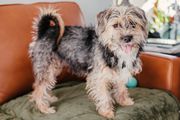
Brussels Griffon Care
Brussels griffons are known for being a relatively low-maintenance breed when it comes to their exercise and grooming needs. However, the big personalities of these small dogs can prove difficult during training, as their intelligence can combine with stubborn habits that require extra care.
Exercise
Brussels griffons should receive routine exercise, but this breed does not require substantial activity to stay healthy. About 30 minutes per day of walking along with a few play sessions should suffice. Be aware that griffs are amazing climbers and jumpers, so it's important to protect your dog from taking a fall that could cause injury.
The flat faces of these dogs don't allow them to cool the air when breathing, which makes them more susceptible to overheating and heat exhaustion. Only exercise your Brussels griffon during the coolest part of the day on hot days, and never leave your dog unattended in a vehicle (even on cooler days). This breed also does not tolerate cold weather well and may need a sweater during chilly seasons.
Grooming
The smooth-coated Brussels griffon requires little more than routine grooming with brushing twice per week, but you should expect some shedding. The rough-coated griff sheds much less, and this is the hypoallergenic option for owners with mild to moderate allergies.
The rough-coated variety needs to have its coat hand-stripped every three to four months. Schnauzer cuts can avoid the need for stripping. Many groomers no longer perform stripping, which is a lengthy process that can be uncomfortable for the dog.
Training
The Brussels griffon is a smart little dog, and therefore quite receptive to training. Like many small breeds, these dogs may possess a feisty streak and can be stubborn. Consistent obedience training is necessary.
Since they are especially prone to alert barking, many owners use special commands to stop barking after giving an alert. Brussels griffons are attentive watchdogs that may become problem barkers.
Housebreaking is another common training challenge. Crate training is recommended to prevent them from sneaking off in the house to hide accidents. You will need to be diligent, but know that some griffons are never completely housebroken.
Griffs can be suspicious of new people and can be fear-biters that snap when frightened. Early socialization with other dogs and new people can discourage fear. They are prone to being territorial and are not afraid of challenging larger dogs, which is can be a dangerous combination. However, griffons often do well with cats.
Similar to their fear-based aggression with other dogs, Brussels griffons are prone to snap and growl at young children if they are hit, chased, or picked up when they don't want to be. If it's raised from puppyhood, you may be able to coach your kids to let this dog determine how they will interact together. Children will need to recognize when the dog is uncomfortable and allow the dog to retreat.
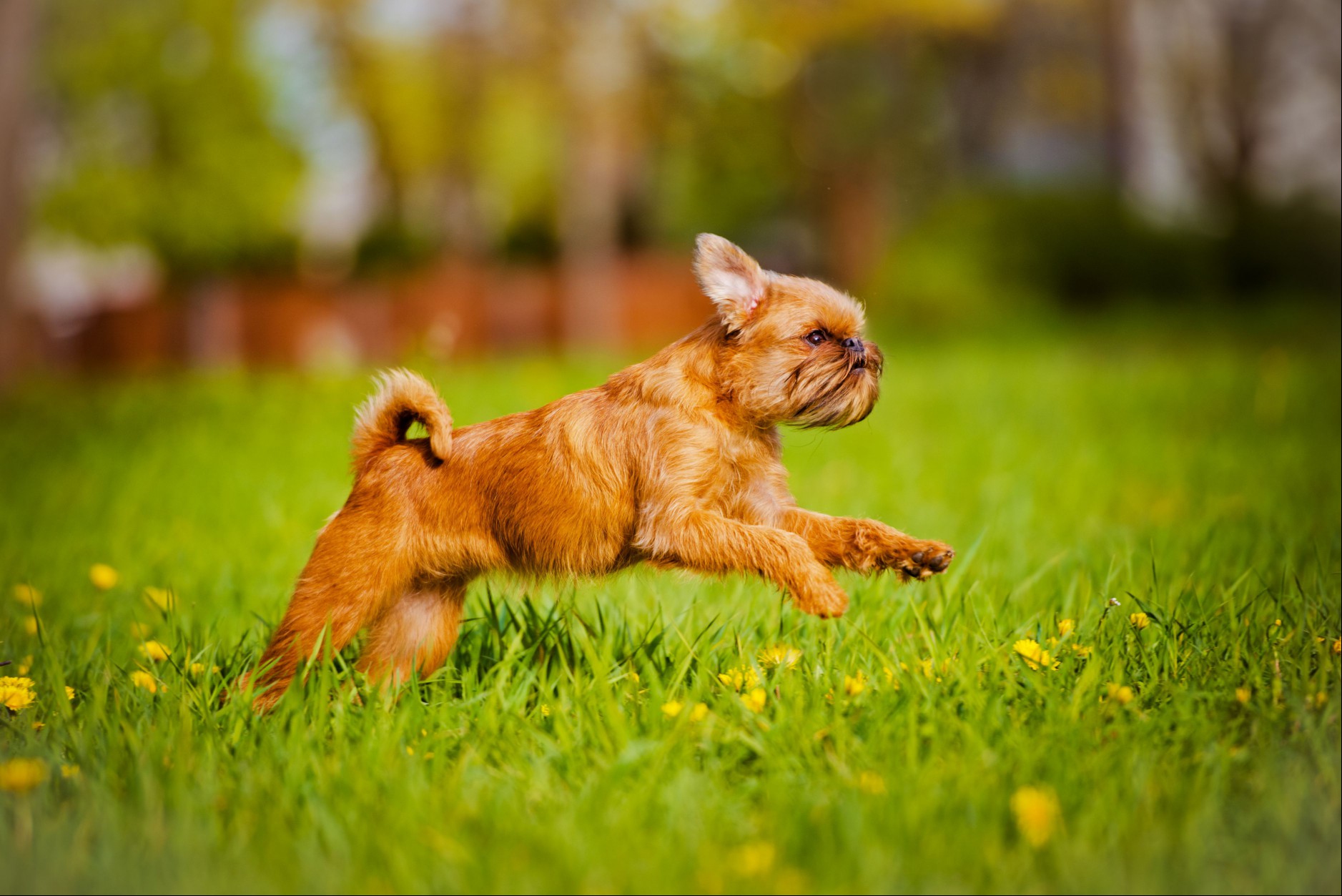
Common Health Problems
Responsible breeders strive to maintain the highest breed standards as established by kennel clubs like the AKC. Dogs bred by these standards are less likely to inherit health conditions. However, some hereditary health problems (such as those that affect flat-faced dogs like Brussels griffons) can occur in the breed.
The following are common conditions to be aware of:
- Brachycephalic syndrome: This respiratory disease causes obstructions to your dog's breathing, and it is common in breeds with flat faces. Some dogs may also have an underbite.
- Luxating Patella: This condition causes the kneecap to dislocate or move out of its normal location.
- Corneal ulcers: Sometimes preceded by corneal dystrophy, corneal ulcers are an abrasion of the eye that commonly occurs in large-eyed dogs or breeds with very short noses.
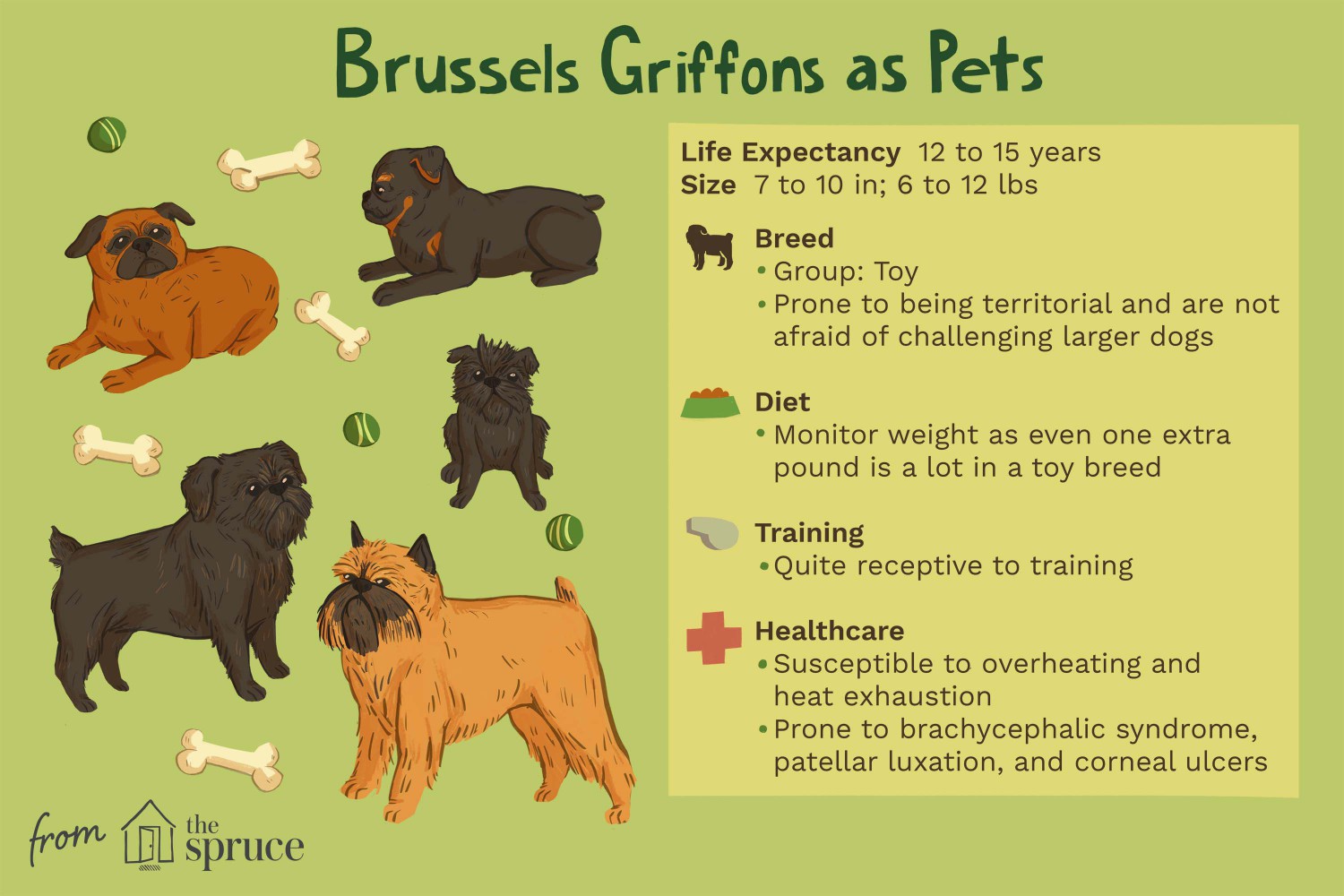
Illustration: The Spruce / Emilie Dunphy
Diet and Nutrition
Brussels griffons should typically be fed two meals per day of high-quality dog food. The best diet for your specific dog will depend on their age, weight, and activity level, so it's best to ask your veterinarian to help you come up with a suitable meal plan.
It's important to monitor your dog's weight, as even one extra pound is excessive for a toy breed. Obesity can shorten their lifespan and increase the risk of other health conditions.
Where to Adopt or Buy a Brussels Griffon
Check your local animal shelter and rescue groups for Brussels griffons in need of homes. If this specific breed isn't available for adoption in your region, many similar dogs can be found to join your family.
If you're planning to adopt a Brussels griffon from a breeder, be sure to ask for the medical history of the litter's parents. Responsible breeders should readily provide results of any recommended genetic tests and allow potential adopters to see the conditions their dogs are kept in. The price of puppies can vary anywhere from $1,000 to $4,000, but they may be higher or lower depending on pedigree and availability.
To start your search, check out these resources for the national breed club, rescue groups, and the AKC:
- National Brussels Griffon Rescue
- American Brussels Griffon Rescue Alliance
- The American Brussels Griffon Association
- AKC Brussels Griffon Breeders
Brussels Griffon Overview
Smart and alert
Extremely loyal
Confident and curious
Not recommended for small children
Housebreaking can be challenging
Prone to aggression with larger dogs
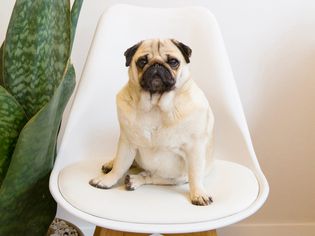
More Dog Breeds and Further Research
Before adopting a Brussels griffon, talk to other Brussels griffon owners, reputable breeders, and rescue groups to learn more.
If you’re interested in similar breeds, check out:
- Affenpinscher
- Miniature schnauzer
- Yorkshire terrier
There’s a whole world of potential dog breeds out there. With a little research, you can find the right one to bring home!
- Do Brussels Griffons Make Good Pets?
The Brussels griffon is a unique dog breed with tons of personality packed into its small body. These dogs make great pets for owners looking for a spirited companion, but they can require substantial training to discourage stubborn habits and are not recommended for life with young children.
Do Brussels Griffons Bark a Lot?Brussels griffons are known for barking. They have a tendency to alert their owners and communicate their emotions, which might require special training to discourage excessive barking.
Are Brussels Griffons Rare?While the Brussels griffon isn't one of the rarest dog breeds, it's still uncommon in many areas. If you'd like to adopt one of these dogs, consider rescuing a similar breed from your local shelter or researching national breed clubs to find a griff in your area.

